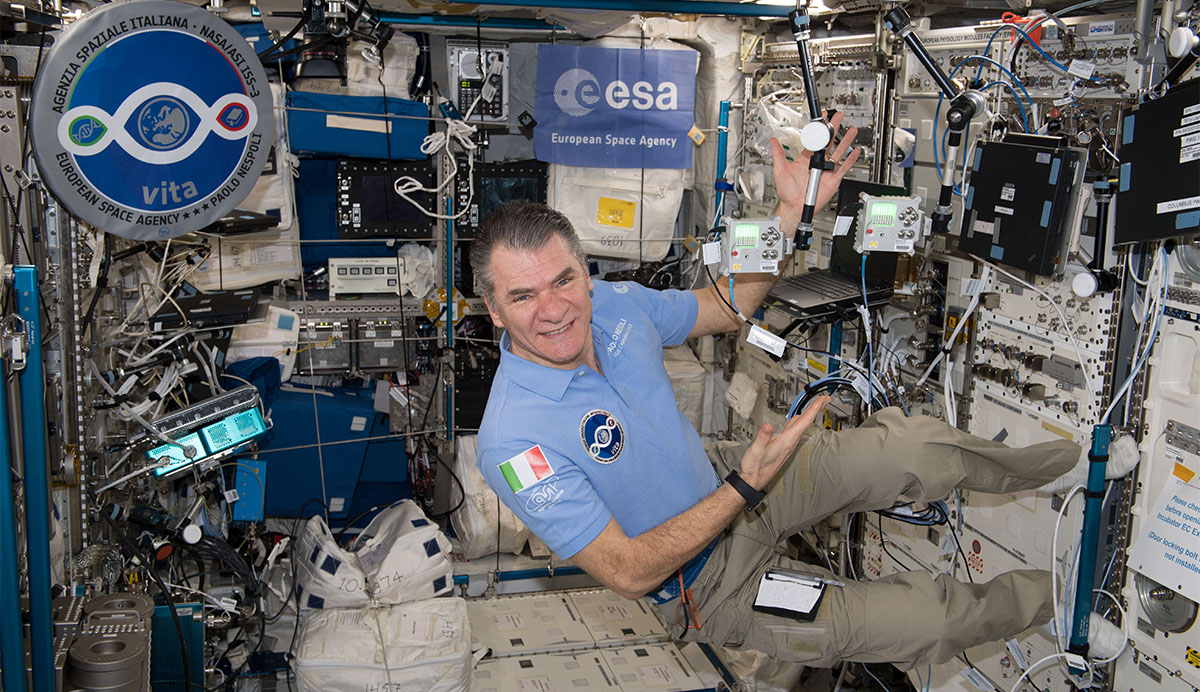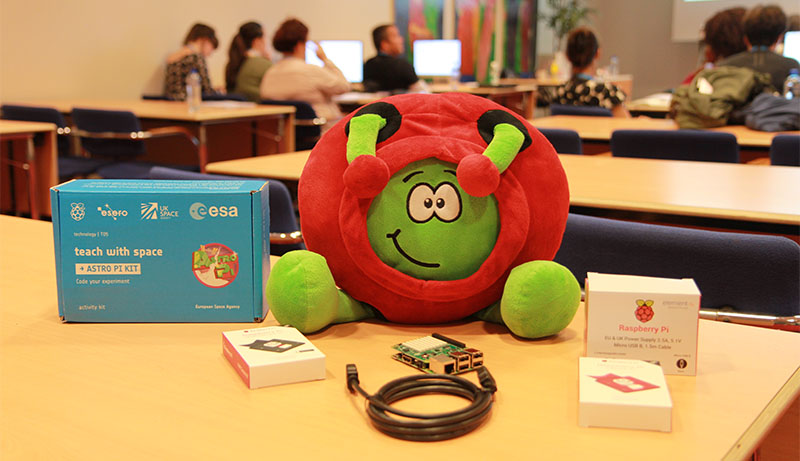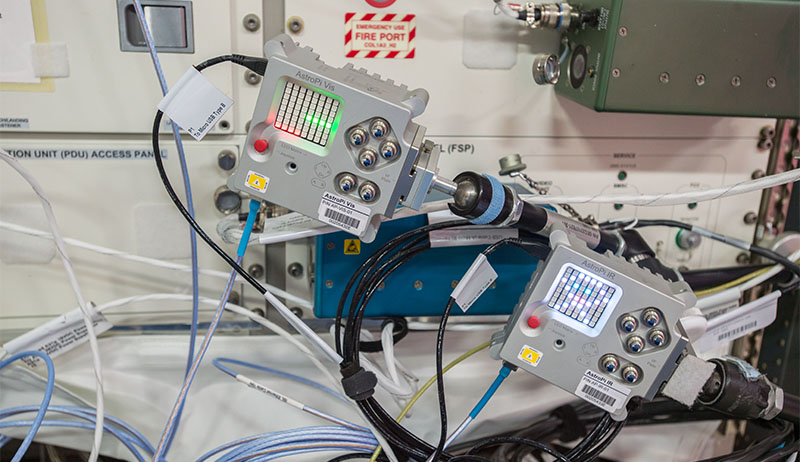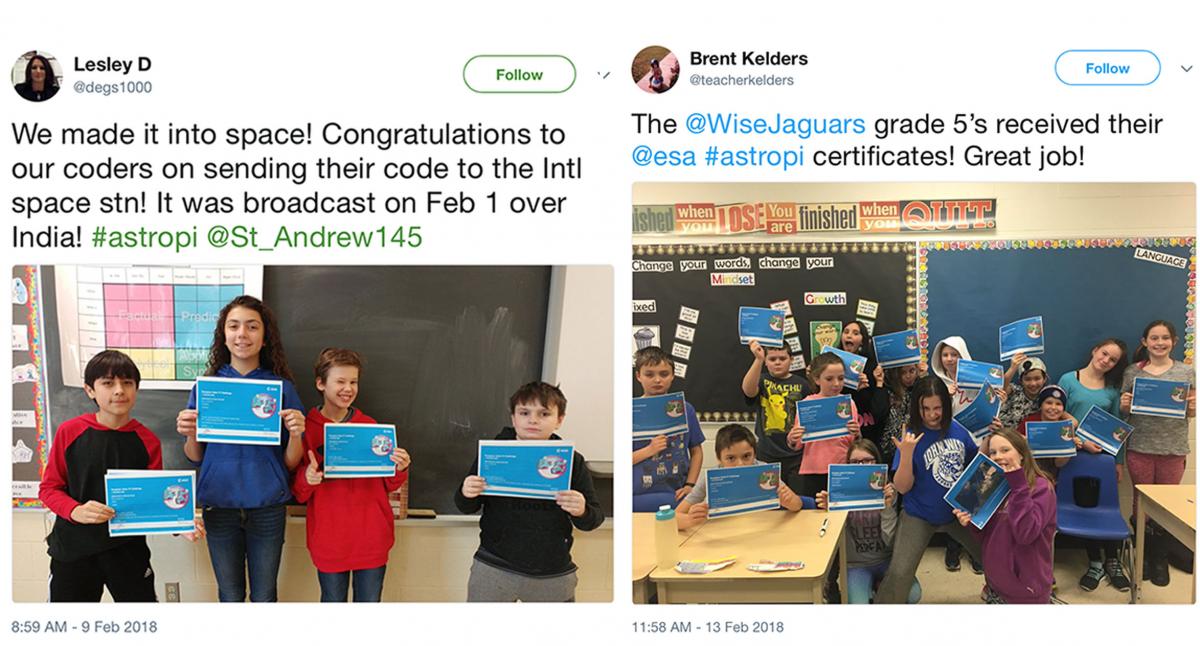Run your coding experiment in space Inspire article
The European Space Agency’s Astro Pi Challenge gives students the chance to conduct their own science investigation on the International Space Station.
Over 400 km from Earth, two ‘crew members’ on board the International Space Station (ISS) are working hard in the name of science. Affectionately known as Ed and Izzy, they are busy at all hours during their space flight, preparing and running scientific experiments using computer coding. But these are no ordinary crew: we’re talking about two personified, space-hardened Astro Pi mini-computers, capable of sensing the environment, recording measurements and taking photos in space.

ESA
Gadgets and gizmos
Developed by the Raspberry Pi Foundation in collaboration with the UK Space Agency and the European Space Agencyw1 (ESA), an Astro Pi is a Raspberry Pi computer equipped with a set of sensors called Sense HAT. As well as detecting pressure, temperature and humidity, Sense HAT incorporates other gadgets including a gyroscope (for detecting variations in orientation), an accelerometer (for detecting changes in motion) and a magnetometer (for measuring the strength and direction of a magnetic field). It contains an LED matrix to display information, and a little five-button joystick. The Astro Pi called Ed is also equipped with a visible light camera, and Izzy with an infrared camera.
As well as all these gadgets and gizmos, the really important thing about these two Astro Pi computers is that they allow school students to run their own code in space. Every year, teams of students up to the age of 19 are invited to enter the European Astro Pi Challenge and design a scientific experiment that could be run using one of the Astro Pi computers on the ISS. As part of their design, students provide the necessary programming code. One of the main goals of the challenge is to inspire as many students as possible to participate in space science using code – in particular, the well-known and user-friendly programming language Python.

ESA
Is anybody there?
The challenge was first run by the UK Space Agency in 2015–16. One of the winning teams, which was made up of primary school pupils, devised a way to detect members of the crew on board the ISS by monitoring humidity levels. If a fluctuation was detected, the Astro Pi scrolled a message asking “Is anybody there?” before taking a picture with its camera. The team successfully managed to catch some of the crew.
In 2016, ESA welcomed entries from students across Europe for the first European Astro Pi Challenge. Since the crew-detection experiment proved to be such an interesting concept, this particular task became a mission for all participating teams. Students also had to come up with an additional experiment of their own. A popular idea used the Astro Pi to calculate the orbital period of the ISS, and one of the winning teams logged the position of the ISS alongside magnetometer readings to determine where the weakest point of Earth’s magnetic field is.

ESA
Hello from planet Earth
For the current edition (2017–18), different challenges were issued to two different age groups: Mission Zero, a non-competitive task for students up to the age of 14; and Mission Space Lab, a competitive challenge for students up to the age of 19. In Mission Zero, students were asked to submit a simple computer program to display a greeting message on the Astro Pi LED matrix, in addition to reporting the current temperature inside the ISS. All 1700 teams that fulfilled the mission had their code run on the ISSw2, and students received a certificate showing the location of the ISS when their code was running.
In Mission Space Lab, students submitted proposals for scientific experiments related to one of two themes: life on board the ISS, or life on Earth. Of the 334 teams that applied, 116 codes were selected and sent to run on the ISS. A popular idea among students was to monitor the health of our planet, for example by investigating light pollution, water pollution or deforestation using images of Earth taken from Izzy’s near-infrared camera. After running their experiments, students analysed the data collected on the ISS and presented their results to the competition jury in the form of a scientific report – just like scientists would do. The winners of the Mission Space Lab challenge will be announced at the end of June 2018.

Lesley D, Brent Kelders/Twitter
Challenge your students to code
The European Astro Pi Challenge will return in September for the 2018–19 school year. Why not encourage your students to take part? You can stay informed about the next edition by visiting the ESA Education websitew3. In the meantime, teachers can find online resources for exploring various science subjects using Astro Pi to combine technology and space in the classroomw4.
Acknowledgements
Special thanks go to the Raspberry Pi Foundation for their collaboration on the European Astro Pi Challenge.
The authors would also like to thank Monica Talevi, Slawomir Zdybski, Alana Bartolini and Joshua Duncan for reviewing this article and providing constructive and valuable comments.
Web References
- w1 – ESA is Europe’s gateway to space, with its headquarters in Paris, France.
- w2 – Watch a video showing a Mission Zero winner’s code running on the ISS.
- w3 – For updates on the European Astro Pi Challenge, visit the ESA Education website.
- w4 – For classroom resources related to Astro Pi, visit the ESA Education website.
Resources
- Find some great projects to help students start writing code via the Raspberry Pi website.





